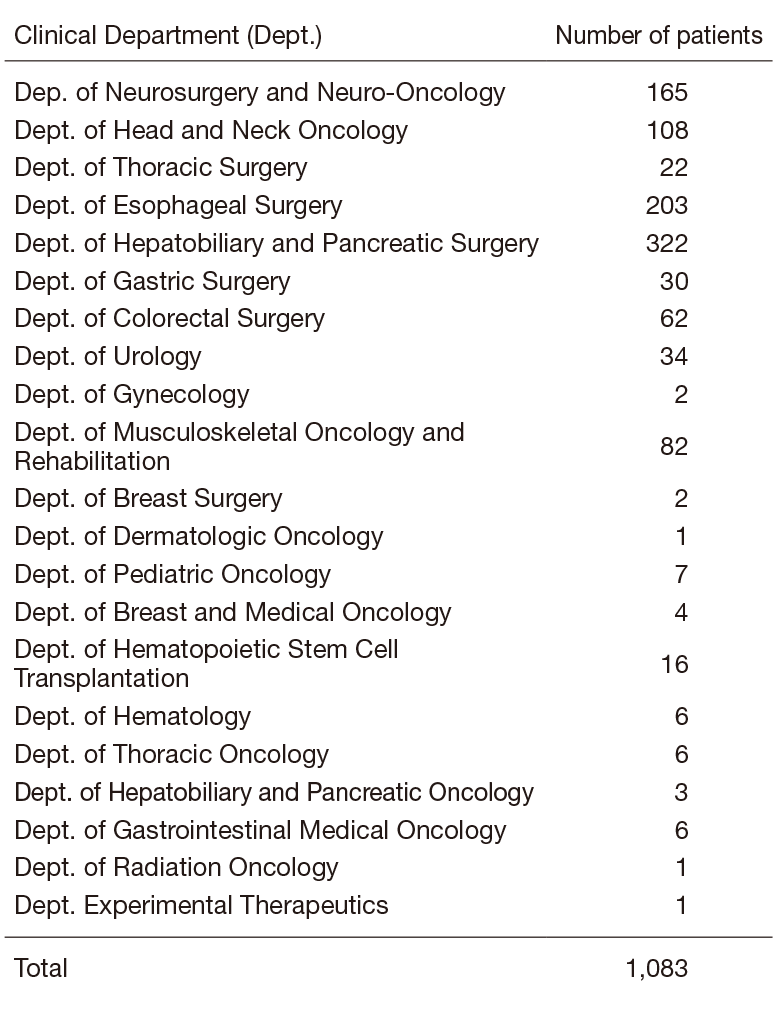Annual Report 2019
Department of Anesthesia and Intensive Care
Tetsufumi Sato, Junya Matusmi, Rie Suzuki, Yosuke Kawaguchi, Misako Shigematsu, Yutaro Asagoe, Naohiro Shioji, Yuki Enomoto, Yousuke Mizobuchi, Satoru Inoue, Tomoyo Matsuoka, Yumi Saito, Hiroyuki Kojima, Kaoru Kato, Hioaki Owada, Yuichi Sasaki, Akiko Ohgaku, Nobuko Yokokawa, Shouko Kawakubo, Sei Manabe, Dan Liu, Yuuki Nishihara
Introduction
The Department of Anesthesia and Intensive Care provides anesthesia and intensive care. Over 5,000 cases a year needing anesthetic services are dealt with at 15 main operation rooms, one MRI operation room and one radioisotope operation room. Over 1,000 intensive care cases a year are dealt with in a ward with eight beds. Our intensivists are also responsible for advising about the management of critically ill patients at wards and resuscitation.
The Team and What We Do
Our department is comprised of over 20 staff anesthetists including eight certificated anesthetists. We provide perioperative care to all patients who require general anesthesia. Our operating section performs approximately 5,000 anesthetic procedures a year including general anesthesia with/without epidural anesthesia, spinal anesthesia, epidural anesthesia, and monitored anesthetic care (Table 1). In addition, scheduled surgery patients are seen by the perioperative management center including the Anesthesia Consulting Clinic.
Also, our intensive care unit is certificated by the Japanese Society of Intensive Care Medicine. It is managed as a closed system by some of our staff including 3 certificated intensivists. About 1,000 intensive care cases a year are dealt with in a ward with eight beds. Patients treated in intensive care are mainly for post-surgical indications. However, some of them are medical emergencies.
Some members of our department are actively involved in research at clinical levels and supervise post doctorate, doctorate, postgraduate and undergraduate students.
Table 1. Numbers of anesthesias classified by anesthetic method

Research activities
One of our members conducts fundamental research into opioids. To understand the risk factors and effects on prognosis of severe adverse events in post-operative patients and critically ill cancer patients, mainly epidemiological analyses were performed. To improve current care for perioperative and critically ill cancer patients, studies are being conducted.
Clinical trials
We will conduct a prospective randomized control study about the difference between anesthetic agents on liver damage after metastatic liver tumor resection.
Education
As for clinical training for non-certified anesthesiologists, their anesthetic management is supervised by certificated anesthesiologists. For clinical training for non-certified intensivists, they are supervised by certified intensivists. And, we organize academic conference presentations and scientific papers. This training is not only for clinical experiments but is also to meet the requirements for becoming certificated specialists.
Future prospects
We continually aim to achieve more effective perioperative procedures including anesthesia and critical care for cancer patients. And we continually improve perioperative management for example employing multiple departments and multidisciplinary members for patients’ safety.
Table 2. Numbers of patients managed at intensive care unit, classified by clinical department

List of papers published in 2019
Journal
1. Manabe S, Miyano K, Fujii Y, Ohshima K, Yoshida Y, Nonaka M, Uzu M, Matsuoka Y, Sato T, Uezono Y, Morimatsu H. Possible biased analgesic of hydromorphone through the G protein-over β-arrestin-mediated pathway: cAMP, CellKey, and receptor internalization analyses. J Pharmacol Sci, 140:171-177, 2019
